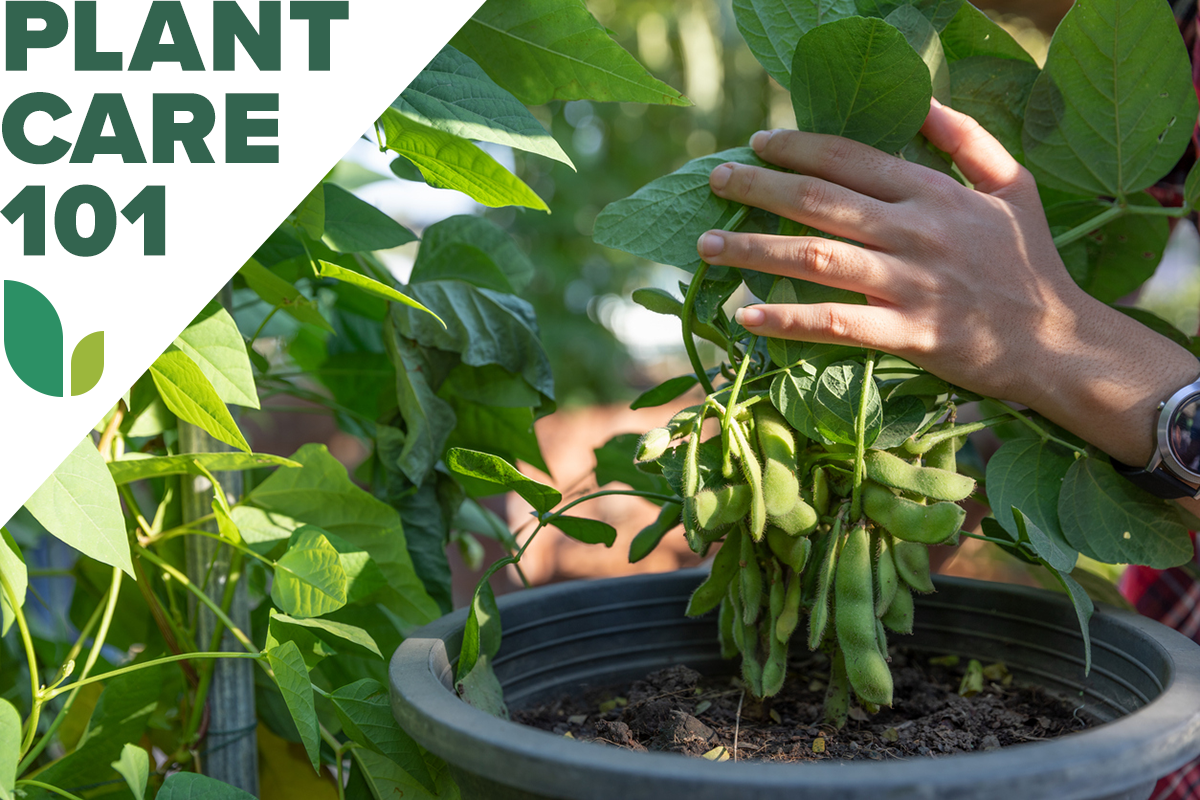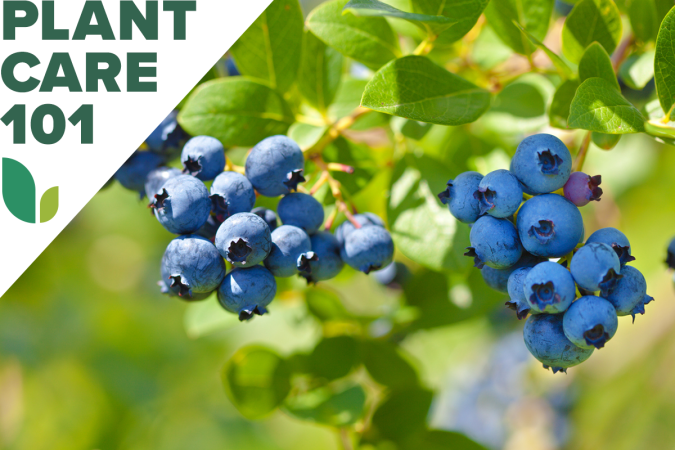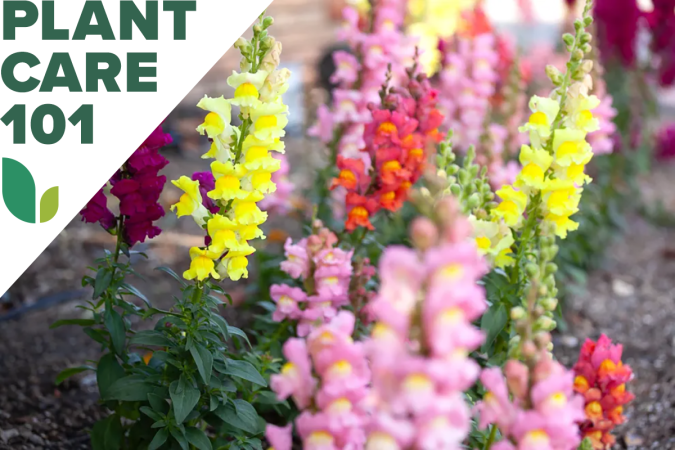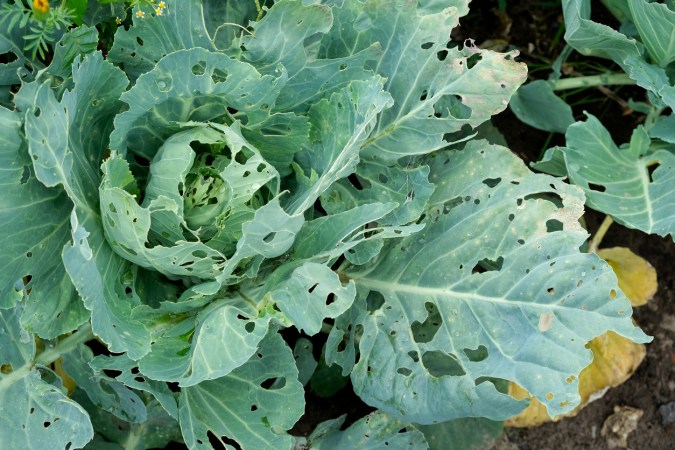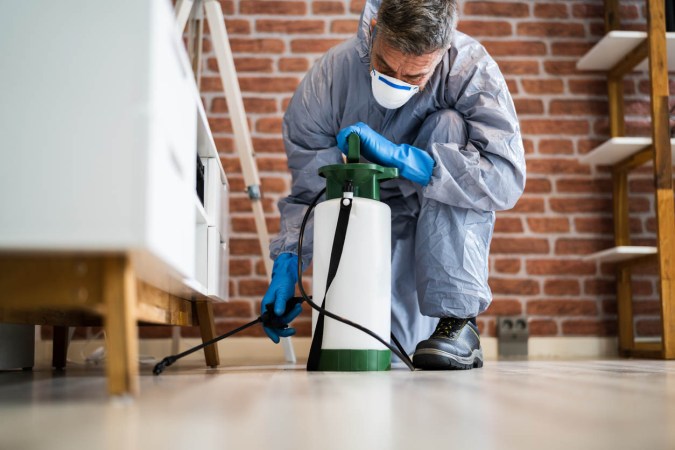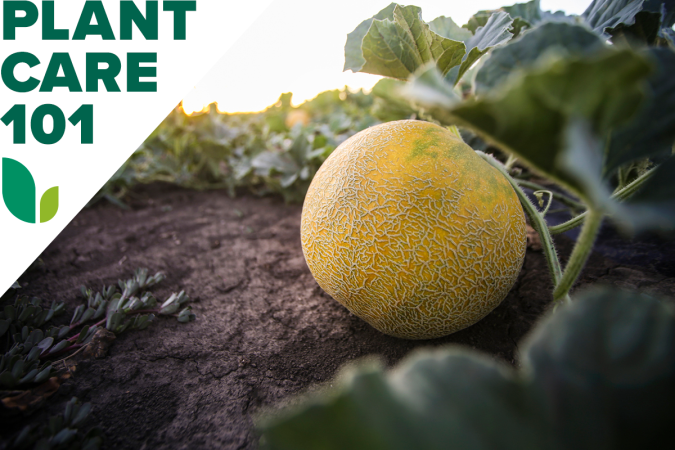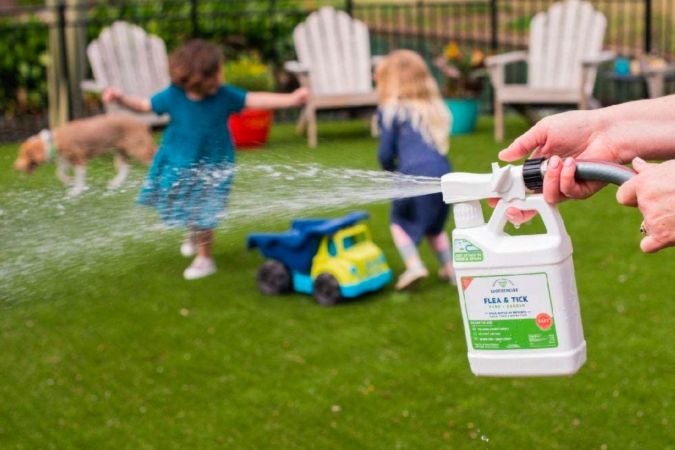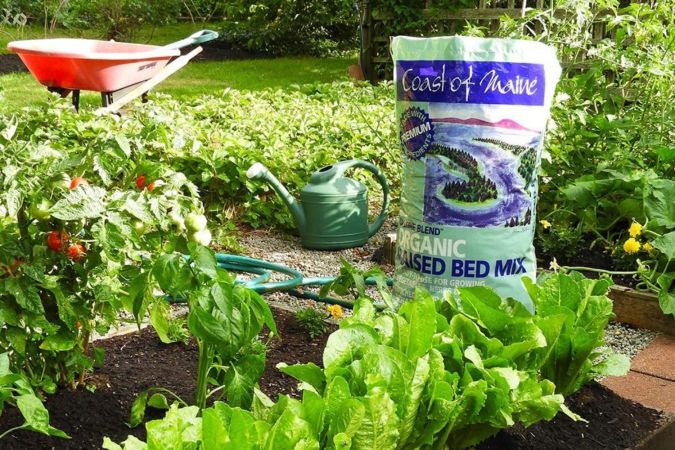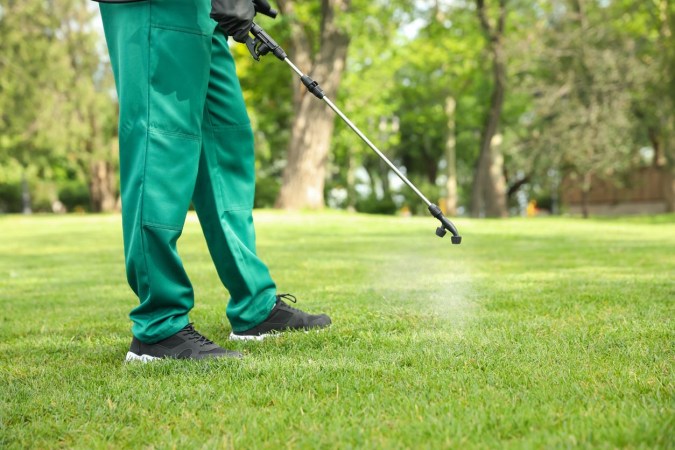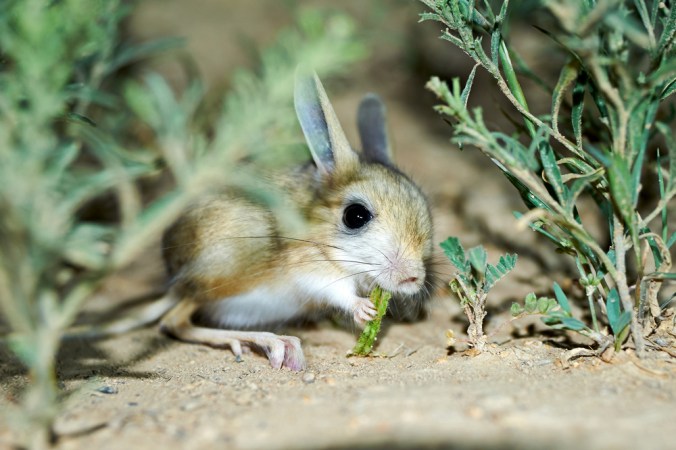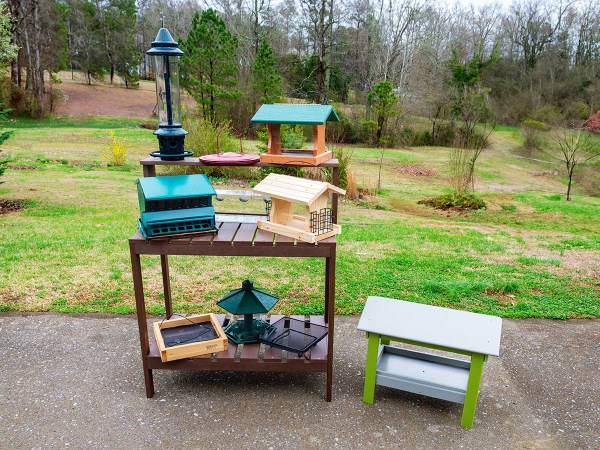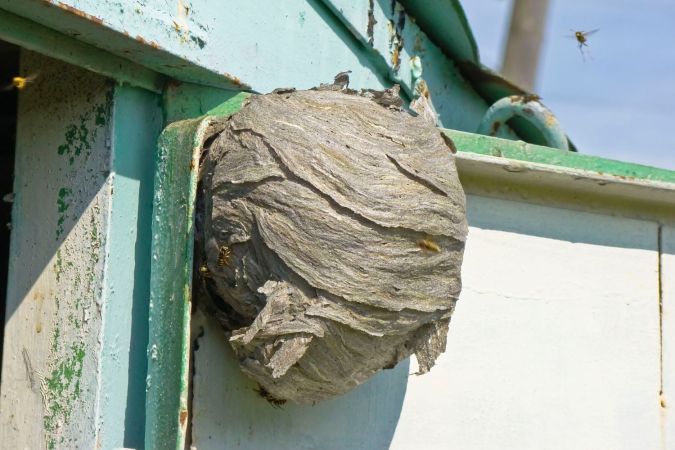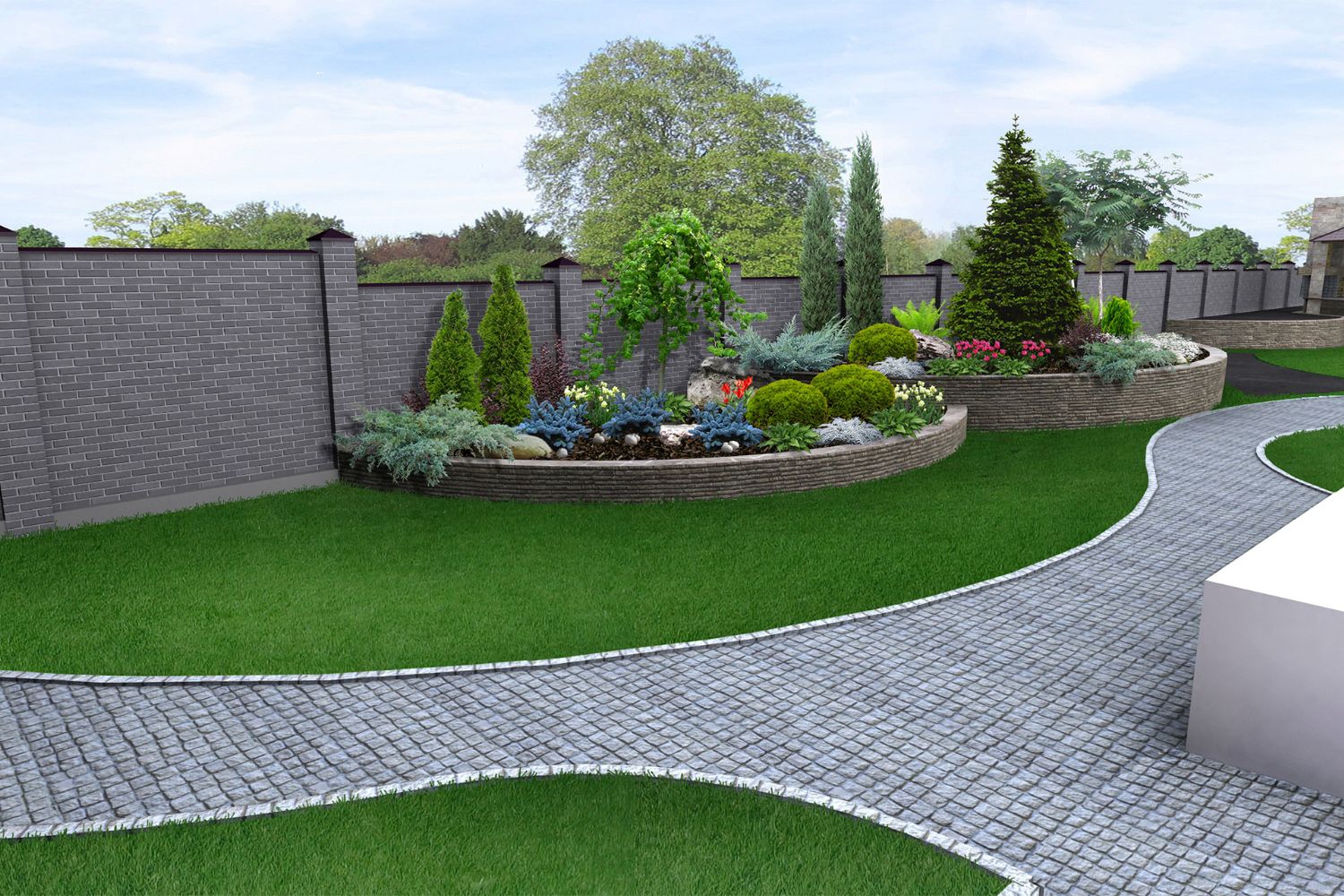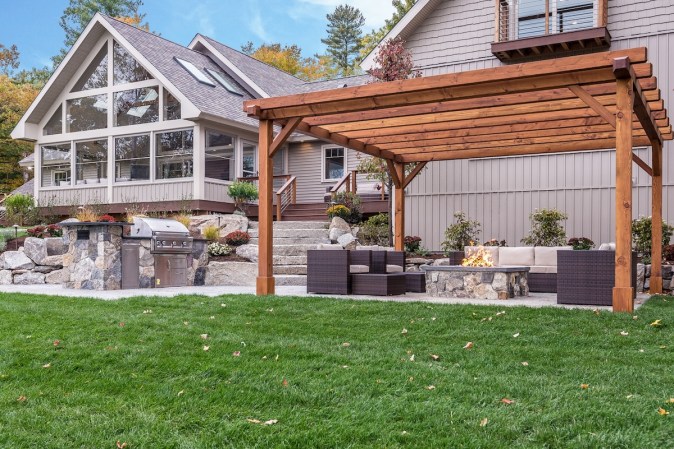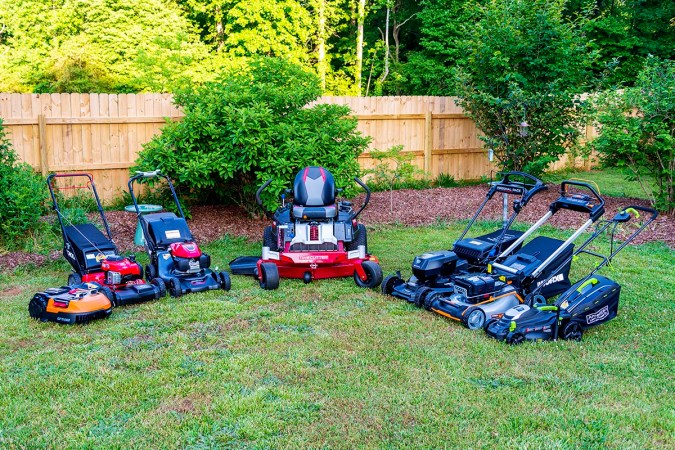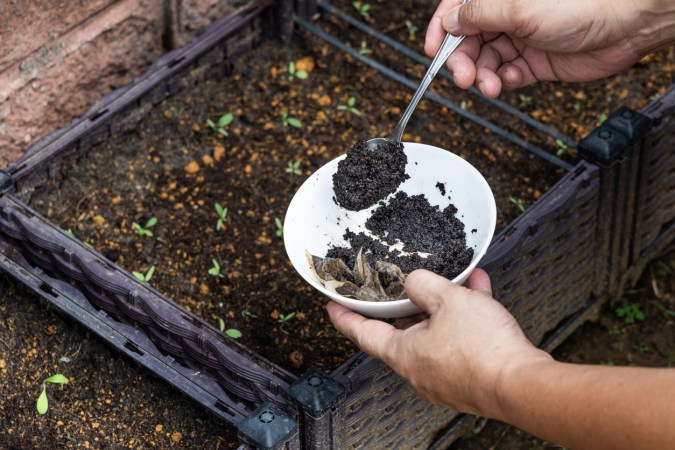We may earn revenue from the products available on this page and participate in affiliate programs. Learn More ›
Although they’re derived from the same species as field soybeans, vegetable soybean cultivars (like edamame) have a larger seed and are generally sweeter and more digestible than field soybeans. Edamame is also harvested at an immature stage when still green, while field soybeans are allowed to dry before being picked.
Similar in size and ease of growth to the green bean plant, the edamame plant generally doesn’t begin flowering until the days begin to shorten after midsummer. For this reason, when determining how to grow edamame, you’ll want to choose a cultivar which will suit the length of your growing season.
Growing Edamame at a Glance
Common Name: Edamame, sweet bean, vegetable soybean
Scientific Name: Glycine max
Hardiness Zone: Annual
Soil: Well-drained, moderately fertile
Light: Full sun
Water: Medium
Food: High-nitrogen fertilizer for non-inoculated seed
Propagation: Seed
Safety: Edible when cooked, toxic raw

Edamame Characteristics
Vegetable edamame soybean plants typically top off at between 12 and 30 inches, though they can grow as tall as 5 feet. They sport fuzzy leaflets, each of which is made up of three leaves that are accompanied by small purple and/or white sweet pea-like blooms. Those pollinated flowers produce 1.5- to 3-inch pods, each of which contains two to four beans.
When selecting edamame seeds for planting, keep in mind that although all of the beans are harvested green for edamame, different cultivars will vary in color if allowed to mature into dried beans. Those hues include black, yellow, tan, and white.
Recommended Edamame Varieties
- Chiba Green: This open-pollinated cultivar grows to 2 feet and produces green beans in 75 to 82 days, with beans turning tan when dried.
- Midori Giant: Also an open-pollinated cultivar, this variety reaches 2 feet in height with green beans in 85 days, which age to yellow when dried.
- Tankuro: Growing to 2.5 feet tall, this open-pollinated cultivar makes green beans in 80 to 85 days that turn a deep, dark green when dried.

Planting Edamame
When planting edamame beans, take note of their maturity group number, keeping in mind that cultivars with lower numbers do best in northern regions.
When is the best time to plant edamame?
To grow edamame from seed, wait until all chance of frost is over and the soil has warmed to 65 degrees Fahrenheit, which is usually late spring. Succession planting doesn’t work well for soybeans, as they bloom according to day length and all plants of the same cultivar tend to flower at the same time, no matter when they were sown.
Where can edamame grow?
Not among the shade vegetables, edamame prefers a location in full sun with moderately fertile soil that has a pH between 6 and 6.5. (If treated with rhizobium inoculant appropriate to soybeans, edamame seeds fix their own nitrogen, which means they don’t require soils of high fertility.) Avoid locations where other legumes such as peas or green beans have grown recently to prevent spreading diseases.
How do you plant edamame?
Edamame plants make good companion plants for cucumbers, so consider that when planting. But in general, planting edamame is simple.
- When planting edamame seeds, sow them 1 inch deep and 2 inches apart.
- Space their rows at least 15 inches apart.
- Keep the soil damp to avoid crustiness (which can prevent germination) until the seeds sprout in 8 to 10 days.
- Thin the edamame seedlings to stand 4 inches apart.
Can you grow edamame in containers?
When planting edamame in containers, use large ones such as 5-gallon pots or half barrels. You can include about six plants in each 22-inch-diameter half barrel and three in each approximately 11-inch 5-gallon pot. Be careful that you don’t allow the soil in those containers to become soggy or to dry out completely.
Watering Edamame
As with most vegetables, soybeans need at least 1 inch of water per week from rain or irrigation. According to Utah State University Extension, “Water stress at any point in the life cycle will limit plant growth and yield. The most critical period is from bloom through pod fill, when drought stress can cause aborted blossoms, small pods, and shriveled beans.” However, you should be careful to avoid overwatering at any of the edamame plant stages, as that can cause root rot.

Fertilizing Edamame Plants
Before growing edamame beans, till about 2 inches of compost into the soil 2 to 4 weeks before you intend to sow the seeds. Since rhizobium-inoculated seeds set their own nitrogen, they shouldn’t require further feeding.
If your seeds weren’t inoculated, you may want to apply a high-nitrogen organic fertilizer. You can identify a high-nitrogen fertilizer using the first digit of the three-digit code; nitrogen is the highest number. Apply the fertilizer once at planting time and again 6 weeks later, following the directions on the package.
Safety Considerations
Although cooked soybeans are safe, they can cause the same indigestion issues that other beans do. However, because edamame beans are harvested when immature, they generally only require about 5 minutes of boiling and are considered more digestible than dry beans, which must be cooked much longer. Just remember to discard the inedible pods, and never consume the beans raw.
According to Specialty Produce, “Raw soybeans are toxic to humans as they contain trypsin inhibitors that affect digestion and can lead to organ damage. They must be cooked with wet heat or fermented to be fit for consumption.”
Potential Pests and Diseases
Deer and rabbits love to chow down on soybean plants. Therefore, when growing edamame, it’s important to take measures to keep them out of your garden. The most effective deterrents include floating row cover, fencing, and/or a guard dog.
Edamame plants also may develop chlorosis, which is a yellowing of the leaves between their veins, if they’re grown in overly alkaline soils. You can alleviate that problem and green up your soybeans by applying a fertilizer that contains chelated iron, following the direction on its packaging.

Harvesting Edamame
An important part of edamame growing is choosing exactly the right point to harvest the green beans when the pods are full but not yet yellowing.
When is the best time to harvest edamame?
Harvest edamame beans in the early morning 70 to 90 days after you sowed them, when their pods are still green but have filled out to the point that the beans are nearly touching each other inside those pods. Don’t wait until those pods yellow, as the flavor of the beans will be affected.
How do you harvest edamame?
Uncooked soybean pods are difficult to shell, which is why the beans often are left inside those pods until after they are boiled.
- Use pruning shears to clip off each plant just above the surface of the soil.
- Carry the cut plants to a comfortable location where you can sit and snip the bean pods from the plants.
- Cook the beans inside their shells before popping the beans from the shells and discarding the shells.
How do you store edamame?
Pods stored in a refrigerator will usually keep for about a week. (They stay greenest right at the freezing point, 32 degrees Fahrenheit, but that is impractical for most gardeners.)
For longer storage, blanch the bean pods (by boiling them for 3 minutes) before cooling them in ice water and placing them in freezer bags in your freezer.
Looking for more annual vegetables? Check out our guides on growing bell peppers, peas, and tomatoes.

